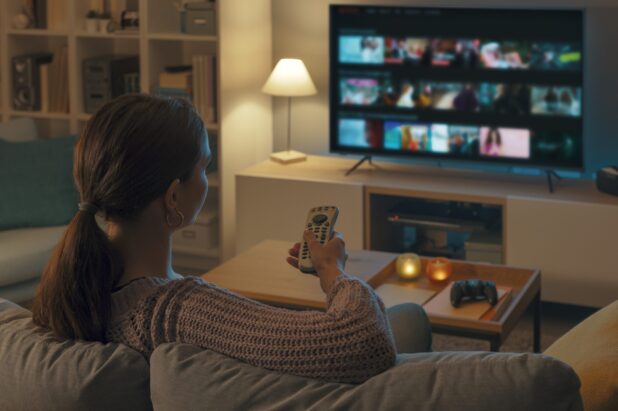ad:tech Chicago is coming along nicely. Coverage of the conference by Online Marketing Blog as well as DMNews and iMedia Connection is keeping those who were not able to attend well informed. Here’s the next installement of our coverage:
Any discussion about social media and social networking is going to involve MySpace. This session did exactly that with some aspect of MySpace being included in just about every speaker’s contribution to the session.
Rather than a presentation format, moderator David Carlick of Vantage Point Venture Partners introduces “Social Media: The Dynamics of the Genre and the Opportunities for Marketers” as a Q and A session.
Carlick starts things out talking about MySpace as a way to explain social media and social networking. He shows a MySpace news clip: MySpace most popular site over Yahoo and Google. The challenge with MySpace is how to leverage advertising.
He goes on to show a sample search of MySpace for a particular demographic and example profiles as well as the kinds of ads that show up. Most of the ads had nothing to do with the content on the profile pages. The content on the profiles for the younger MySpace members was a bit racy. Racy content makes brands tentative about advertising on MySpace.
MySpace is more fun that television! But how do you monetize it?
New we get into the moderator/panel commentary and Q and A.
Amy Gibby of eCRUSH.com starts out with:
Is social networking something advertisers can ignore?
She sites an Economist article that discusses the evolution of advertising:
The Wanamaker Era:
“Half of the money I spend on advertising is wasted. The problem is, I don’t know which half.”
Tobaccowala Era:
“Advertisers now make lots of spearheads and then get people to impale themselves.”
Gibby recommends an article, “Parenting your Brand in the social media space by Pete Blackshaw of Intelliseek.
eCrush got into the social networking game in 2002 with “eSpin the Bottle” that serves as a forum for participation with advertisers. As you enter different social media spaces, there are different rules for engagement. The social media space is not a fad.
The Spin the Bottle social networking service profile experience is very controlled. That information makes it easier to target for advertisers. Allows advertisers to target very specific demographics. Members control the content as well as the advertising.
Next up is Shawn Gold, Senior VP, Marketing and Content, MySpace.com:
Is social networking a fad or an enduring behavior?
MySpace is a place for “friends”. Whether social networking is a fad or not is an interesting question, because social networking has been around since the beginning of time. Social networking online is evolving and the question is asked a lot. Probably because many of the big players in social networking have come and gone.
Gold goes on to explain social networking in the context of 1.0 and 2.0.
Social networking 1.0 was characterized by services like Geocities and Angelfire. They’re not around anymore because the install base was not ripe. The early services focused on expression and were weak at that. The core of MySpace popularity and success is individuality and the ability to make connections. Social networking 1.0 was pre-digital camera and pre-many other media tools for expression. Also, the social networking 1.0 services served the business side and not the consumer base.
Social networking 2.0 pioneer Friendster failed. Why? They could not support the user base from a technology perspective. The core audience on Friendster is older than on MySpace. Many people tried it out and then went back to email and IM. Friendster limited users’ ability to express themselves. When users hacked the Friendster templates, they were booted off. MySpace encourages such customization.
Friendster was limited in what you could share. The ability to connect was limited. The ability to blog was added later. Alternatively, MySpace creates tools for the influencers in the respective areas of popular culture, and then creates tools for their fans to interact.
Arguments for why MySpace is going to fail:
– MySpace is a fad because everything is going mobile: MySpace is launching mobile features.
– MySpace will become uncool. – Out of 100m users, some are probably not cool, but that does not make MySpace “uncool”.
– Core audience will grow out of it – MySpace is not a technology to the younger users, it’s “just there”, its part of what they do.
– Spam will kill MySpace – MySpace is empowering users with control over who can and cannot contact them.
– If features do not evolve – True, MySpace understands that and will continue to evolve.
The “Secret sauce” is respect for the users. Tom is a figure head and does a good job empathizing with the user base and finding out what is important to them.
Amy from eCrush.com mentions that the session is not whether MySpace a fad, but whether social media is a fad. Her comment to the audience was, “Don’t sidestep the social media space based on what’s happening with one player (like the success of failure of MySpace)”
Now we have Ted McConnell, Interactive Innovation Director, Procter & Gamble:
Are the social networks safe places for advertisers?
How “they” as college students, they thought we as companies should talk to them.
Reply was a picture of head with 2 pipes going into it. One for friends and one for companies. Ignore companies and pay attention to friends.
They did research on the topic and one slide of note: The key to polite behavior is the balance between intimacy and intrusiveness.
How well you do as an ad in a social networking space, is how well you balance the intimacy and intrusiveness of a message.
Next slide shows a graph of “Intrusiveness in the wrong context creates negative effect towards brand.”
More dislike of brand after receiving ads in more intimate, more intrusive channels. Ex: Hey, check out this video, when the video is an ad. Elicited responses such as WTF?
Concern is that the opportunity with social networking will be ruined if users are not respected. Respect the intimacy of the channel.
The last panelist is Kris Oser, Director of Strategic Communications, eMarketer:
How do advertisers deal with the social networking environment?
Her answer? “Gingerly – like new parents holding a new baby”. However, that doesn’t stop advertisers from spending money.
$280m will be spent on social networking sites, mostly creating profiles. eMarketer predicts that by 2010 it will increase to $2.5 billion. Why? Thhere is nothing more popular on the web. MySpace has had a 367% increase in traffic this year alone.
The big question is whether social networking will attract blue chip advertisers. Oser says social networking is a cultural phenomenon that advertisers are not going to ignore. Advertisers are finding alternative spaces to show ads, such as the advertiser safe area on MySpace.
Even if a brand isn’t ready to setup a profile, they should get involved such as though monitoring their brand on social networks and paying attention to what users are saying.
Advertising on social networks is 1 to 1 to many. Example: a single user gets a targeted message who then passes it on to an influencer who spreads the message to their network. Examples of how social networks have been influential include the movies, “Snakes on a Plane” and “Pirates of the Caribbean”.
Now we move to the Q and A:
Audience: What is P&G doing with social networking?
P&G: There are some typical campaigns that are being tested, not going to mention specifics.
Audience: What does the panel think of Second Life and avatar based environments and also of those environments as a place for advertising?
MySpace: Advertising can be done anywhere as long as it’s done credibly and it helps further the reason users engage in the medium in the first place. The kind of advertising that works with youth culture is Humor, Irony the unvarnished truth regardless of where it occurs.


